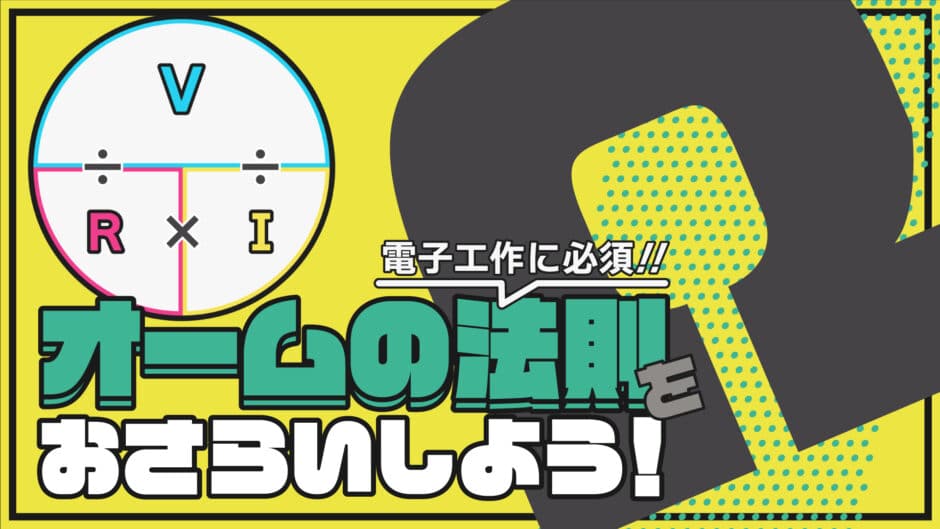Youtube
0:00 Opening
0:24 What is Ohm’s Law?
1:15 Series and parallel connections
2:22 Real-world example: use in electronic circuits
5:13 One Point Advice
5:50 Summary
How to use Ohm’s law for electronics beginners


What is Ohm’s Law?
Ohm’s law is a formula for predicting currents and voltages in advance of operating a circuit.
This knowledge is essential for the safe and accurate operation of the circuit.
Ohm’s law is.
V(voltage)=R(resistance)×I(current)
The following can be expressed in the following way
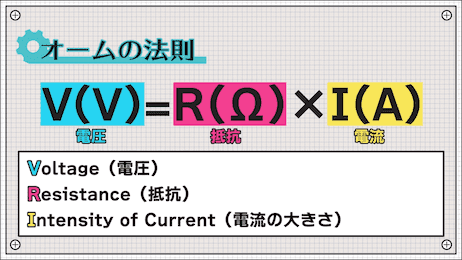
As shown in the figure above, V stands for Voltage, R for Resistance, and I for Intensity of Current.
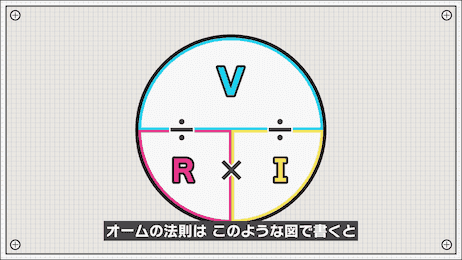
You can simply memorize it as V=IR, but it is easier to understand when calculating if you visualize it as shown in the above figure.
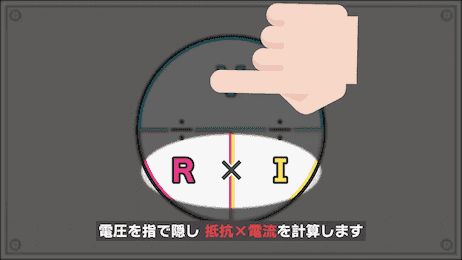
To find the voltage (V), hide the voltage, which is the value you want to find, with your finger and multiply it by the resistance (R) and current (I).
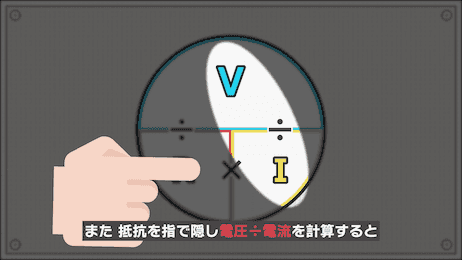
Also, if you want to find the resistance (R), you can hide the resistor with your finger and divide the voltage (V) by the current (I) to find the resistance.
Series and parallel connections

In order to calculate the current and voltage of a circuit, a rule that must be remembered in conjunction with Ohm’s law is the relationship between series and parallel connections.
There are two types of connections of components: series and parallel connections, and any circuit is basically a combination of series and parallel connections.
The current and voltage of each part will also vary depending on whether the parts are assembled in series or parallel.
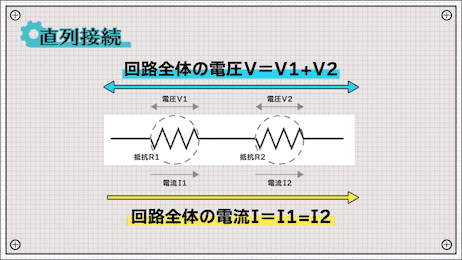
The voltage across the circuit when connected in series is
Voltage of the entire circuit (V) = V1 + V2
The following table shows the number of the
Also, the current for the entire circuit is
Current (I) in the entire circuit = I1 = I2
and all are equal.
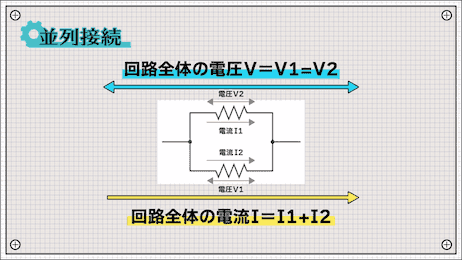
On the other hand, in parallel connection, the relationship is reversed from that in series connection.
Voltage of the entire circuit (V) = V1 = V2
and is equal to the voltage of each section.
On the other hand, the relationship between the current
Current in the entire circuit (I) = I1 + I2
The following table shows the number of the
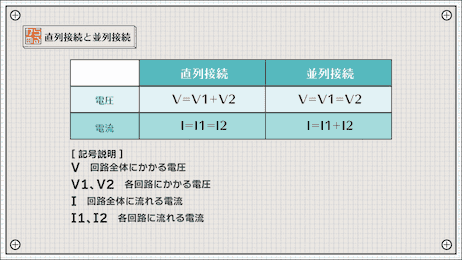
Here is a summary of the relationship between the above series connections in parallel.
These are not to be memorized by formula alone, but as if the electric current is the same property as the flow of water.
It will be easier to remember if you can visualize it.
Real-world example: How to use in electronic circuits

Now that you have memorized Ohm’s law and the basic rules, let’s calculate how to use it in an electronic circuit.
Question 1
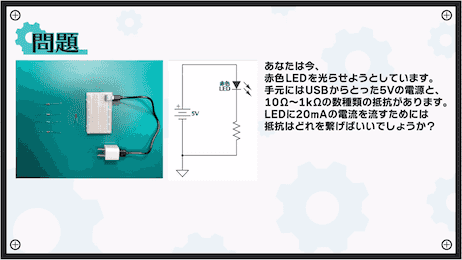
First, here is an example.
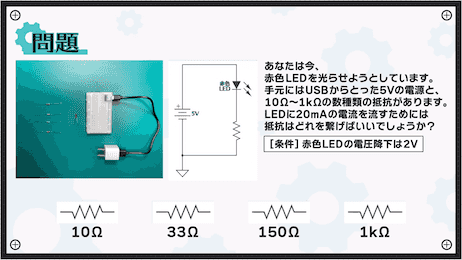
You have four choices, but which one is correct? Please think once.
The correct answer is 150Ω.
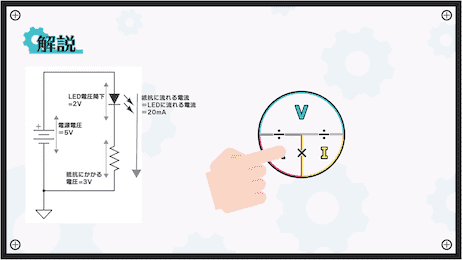
What we want to seek in this method is resistance.
In the previous formula, we can see that by hiding the resistor, the voltage divided by the current.
So, first, find the voltage.
Voltage across the resistor
= Supply voltage – LED voltage drop
=5V-2V
=3V
The first two are the following.
Next is the current.
Current flowing through the resistor
= Current flowing through LEDs
=20mA
Thus, applying these to the equation
Voltage at both ends of the resistor / Current through the resistor
= 3V / 20mA
=150 ohm
150Ω is the correct answer.
Question 2
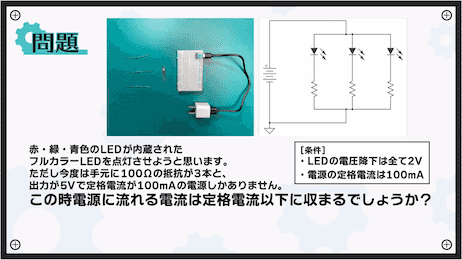
The rated current is the current that must not flow any higher than the rated current.
Also, assume that all LED voltage drops are 2V.
Does it fit below the rated current or not? Consider this once as well.
The correct answer is to stay below the rated current.
Now for the explanation.
This time, since the connection is made in parallel, the current flowing to the power supply is the sum of the currents I1, I2, and I3 of each route.
I=I1+I2+I3
Then, when determining the current in each section, we hide the current in the Ohm’s law formula described earlier.
Then you can see that it is voltage divided by resistance.
First, find the voltage.
Voltage across the resistor
= Supply voltage – LED voltage drop
=5V-2V
=3V
The resistance value is 100Ω.
Voltage flowing through the resistor / Resistance
=3V÷100Ω
=30mA
The current on each route will now be 30 mA.
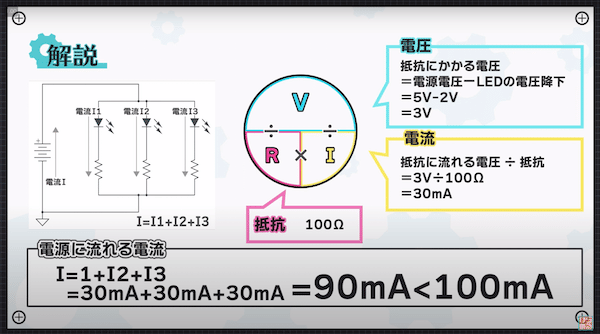
Since the current flowing in the power supply is the sum of all circuits
I
=I1+I2+I3
=30mA+30mA+30mA
=90mA < 100mA
Since the derived value is smaller than 100mA, it is found to be less than the rated current.
How to remember Ohm’s law
Finally, some advice on how to remember Ohm’s law.
The trick to remember is “Masked Rider”.
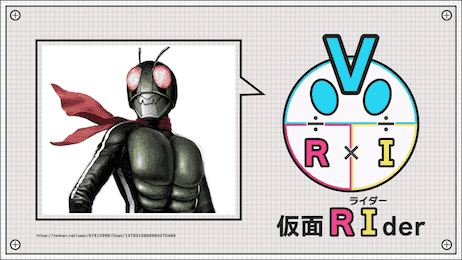
As shown in the figure above, the V on top is a masked rider’s horn.
Remember that the R and I below are the R and I of the masked RIder.
By remembering it as a masked rider, you will not forget this formula this time.
summary
This time, the theme is “How to Use Ohm’s Law for Beginners in Electronics”.
Ohm’s law was explained.
If you are afraid to suddenly put it into practice in an actual circuit, you can do so.
One way is to utilize simulations such as LTspice.
It is not difficult once you get used to it, so why not try it as well?
 Start electronics
Start electronics 